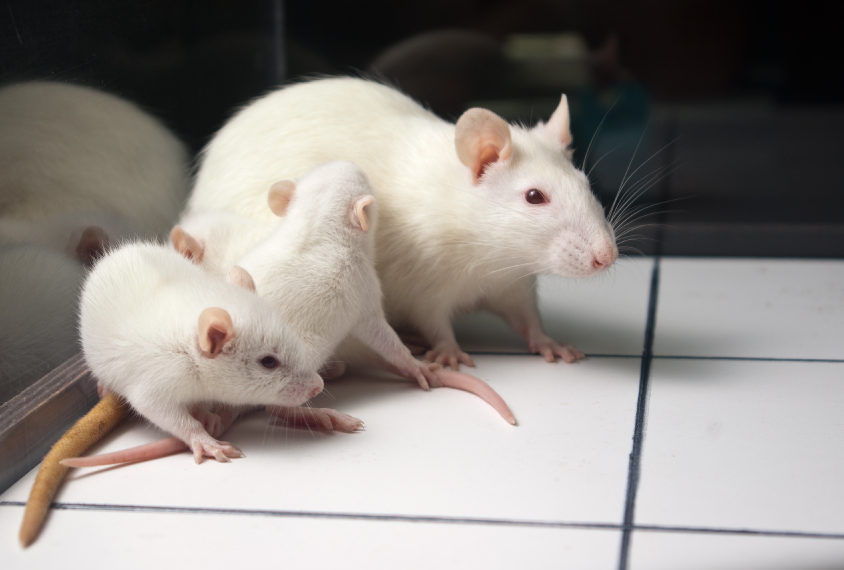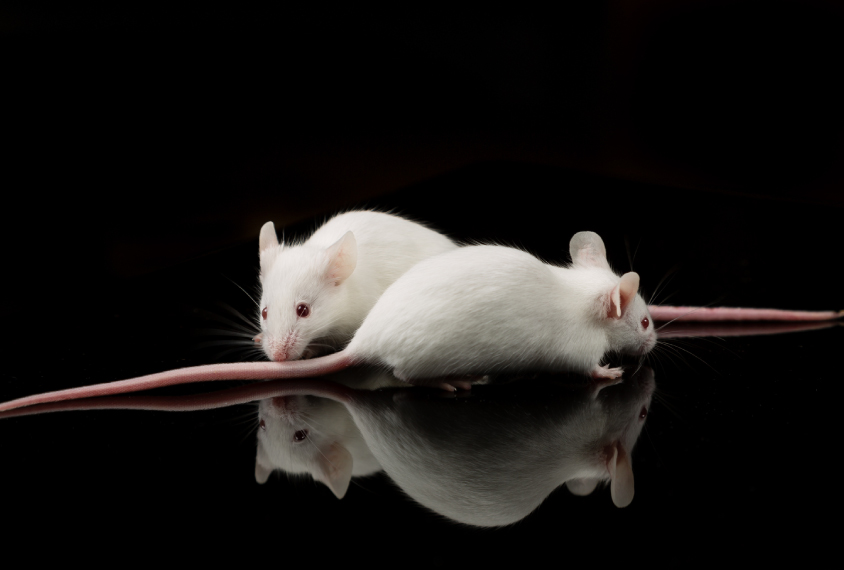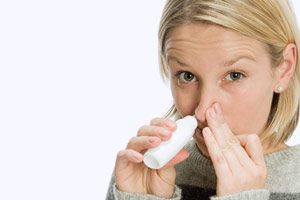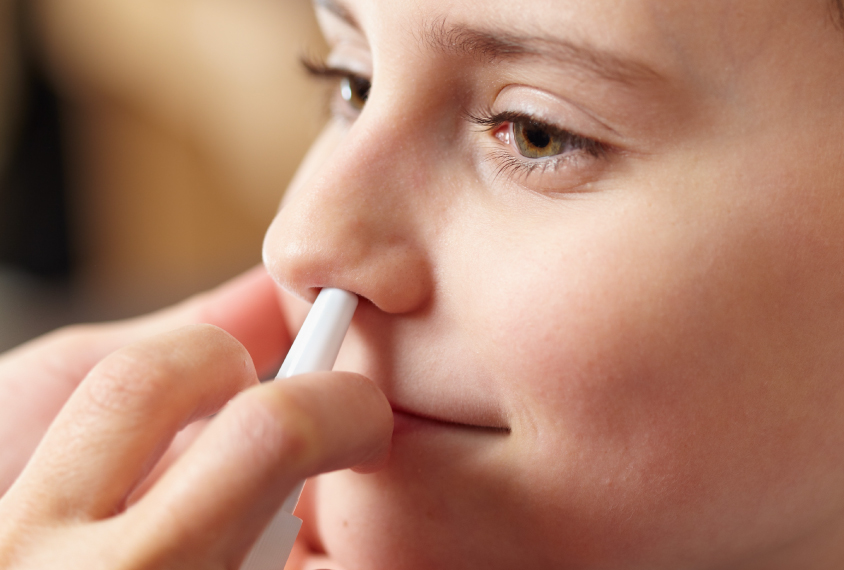Listen to this story:
Of all the brain chemistry that autism researchers study, few molecules have garnered as much attention as the so-called ‘social hormone,’ oxytocin. Some autistic children appear to have low blood levels of oxytocin, which has led several teams to test oxytocin delivered intranasally as an autism therapy. So far, though, such clinical trials have yielded inconsistent results.
Here we explain what scientists know so far about oxytocin’s connection to autism.
What does oxytocin do in the brain and body?
Oxytocin serves multiple purposes, such as promoting trust between people, moderating our response to threats, and supporting lactation and mother-child bonding. The hormone is produced primarily in the hypothalamus, a brain region that mediates basic bodily functions, including hunger, thirst and body temperature.
Oxytocin-producing neurons in the hypothalamus project into other parts of the brain, such as the nucleus accumbens, where the hormone regulates social-reward learning. In the brain’s sensory system, including the olfactory bulb, oxytocin seems to help balance excitatory and inhibitory signals, improving social-information processing, at least in rats. In the amygdala, oxytocin appears to help dull threat responses to negative social information and foster social recognition.
The pituitary gland controls the release of oxytocin into the bloodstream. Blood oxytocin is crucial to start uterine muscle contractions during childbirth. It also supports lactation by facilitating the milk letdown reflex, stimulating the flow of milk into the nipple.
Scientists first identified oxytocin’s role in social interactions in prairie voles. The hormone, which is released in the voles’ brains when they mate, facilitates the formation of a monogamous bond. Blocking the animals’ oxytocin receptors inhibits their pair bonding, but administering oxytocin leads to bonding without mating, a 1995 study found. Administering small amounts of oxytocin to young voles improves their ability to bond as adults and decreases anxiety-like behavior, according to one 2009 study. But long-term treatment impairs their ability to bond as adults, a 2012 study found.
Why do researchers suspect there is a connection between autism and oxytocin?
Some studies, though not all, have found that autistic children have lower blood levels of oxytocin, on average, than their non-autistic peers. And autistic children with lower levels demonstrate poorer social skills than those with higher levels.
Some autistic people have genetic variants in the oxytocin receptor, a protein to which oxytocin binds to carry out its functions.
The exact relationship between oxytocin and autism is not clear, though. Not all autistic people have low levels of oxytocin, nor do they all have altered oxytocin receptors.
How are oxytocin blood levels connected to oxytocin levels in the brain?
This simple question has no simple answer. Some evidence suggests that blood levels of oxytocin are highly correlated with the hormone’s level in cerebrospinal fluid, which is thought to reflect oxytocin activity in the brain. But other work suggests that a person’s blood level of oxytocin may not be a reliable indicator of the hormone’s level in her central nervous system, because these levels can vary widely depending on the methods used to measure them.
Can treatments that increase oxytocin levels improve social function in people with autism?
It’s unclear. Oxytocin in the blood cannot enter the brain, so researchers must administer it in the form of a nasal spray; the olfactory bulb, which lies just above the nasal cavity and projects neurons into the cavity, can take up oxytocin administered this way — a direct nose-to-brain route that bypasses the bloodstream.
Autistic people who received intranasal oxytocin paid greater attention to others’ faces during a cooperative game, evidence that the hormone can address one of autism’s core traits, according to a small 2010 study. Participants who received oxytocin also engaged with other players during the game more than those who did not receive it.
Children with autism who have low levels of oxytocin in their blood to begin with show improvement in social skills after oxytocin treatment, according to a 2017 study. Participants who did not start out with low oxytocin levels, however, did not show the same improvement.
By contrast, an oxytocin nasal spray did not improve social behaviors in another group of autistic children, according to a trial whose results were published in October 2021.
Why have these clinical trials yielded mixed results?
One reason may have to do with how trials measure the hormone’s effectiveness. In the 2021 trial, for instance, researchers used a tool designed to measure participants’ levels of social withdrawal. But such a tool may not be sensitive enough to measure slight improvements in other skills, such as picking up on intuitive cues or subtle norms, that boost autistic people’s ability to function socially, says Elissar Andari, assistant professor of psychiatry at the University of Toledo in Ohio, who was involved in the small 2010 study. In that study, Andari’s team tracked eye contact, assessed the quality of participants’ social interactions and used participant self-reports of their emotional experiences. The 2017 trial described above employed a clinical questionnaire designed to measure social ability in autistic and non-autistic people.
Mixed results may also reflect the fact that intranasal oxytocin may not be able to reach the oxytocin neurons involved in social behavior, experts say. Rather than getting oxytocin into the brain, scientists have also started to test molecules that can cross the blood-brain barrier and stimulate natural oxytocin release. In prairie voles, for instance, unpublished data suggest that the molecule melanotan II could improve oxytocin release in the brain.
Another possible explanation for the mixed results is that oxytocin’s effect on social behavior is limited when the treatment context lacks social cues. Oxytocin increases the salience, or relative importance, of social stimuli, Andari and other experts say. Therefore, treatment studies with oxytocin should be done in conjunction with behavioral therapies to maximize benefit, Andari says.
Based on all of the studies to date, it remains unclear how much oxytocin might be needed to benefit autistic people’s social functioning, who exactly might benefit from it and for how long it should be given, Andari says.
A brief timeline of oxytocin research:
1906

First finding:
Sir Henry Hallett Dale, an English physiologist, discovers the effects of oxytocin, using an extract from oxen pituitary glands. Adding a few drops to a pregnant cat’s uterus caused contractions.
1979

Maternal instinct:
After being given oxytocin, young female rats exhibit maternal behaviors toward foster pups.
1992

Scattered receptors:
The distribution of oxytocin receptors in the brain differs between prairie voles, which remain monogamous throughout life, and non-monogamous montane voles, suggesting an evolution in species-specific social bonding and mating behaviors.
1994

Cozy up:
Administering oxytocin to a female prairie vole while she is in a cage with a male vole leads her to later prefer that partner over an unfamiliar male.
1998

Lower levels:
Autistic children have lower levels of oxytocin in their blood plasma than non-autistic children do, research suggests.
2002

Oxytocin knockout:
Mice lacking the oxytocin gene emit fewer noises when separated from their mother than wildtype mice do, and they are more aggressive as adults, according to a study.
2003

Curbed behavior:
A synthetic form of oxytocin slightly lessens repetitive behaviors, according to a double-blind, randomized trial with 15 autistic adult participants.
2010

Inhaled hormones:
Inhaling oxytocin causes autistic people to report feelings of enhanced trust with fictitious partners in a virtual ball game, a study with 13 participants suggests.
2014

Highly heritable:
Blood oxytocin levels are about as heritable as height and can be used to predict social functioning in children with autism, a study suggests.
2017

Positive results:
Administering oxytocin intranasally improves social abilities, and children with the lowest levels of oxytocin in their blood benefit the most, according to a small clinical trial with 32 autistic participants.
2021

Trial flop:
A randomized, controlled trial involving 277 participants finds that oxytocin does not improve social functioning in autistic children.
Cite this article: https://doi.org/10.53053/NLAU3623

By joining the discussion, you agree to our privacy policy.